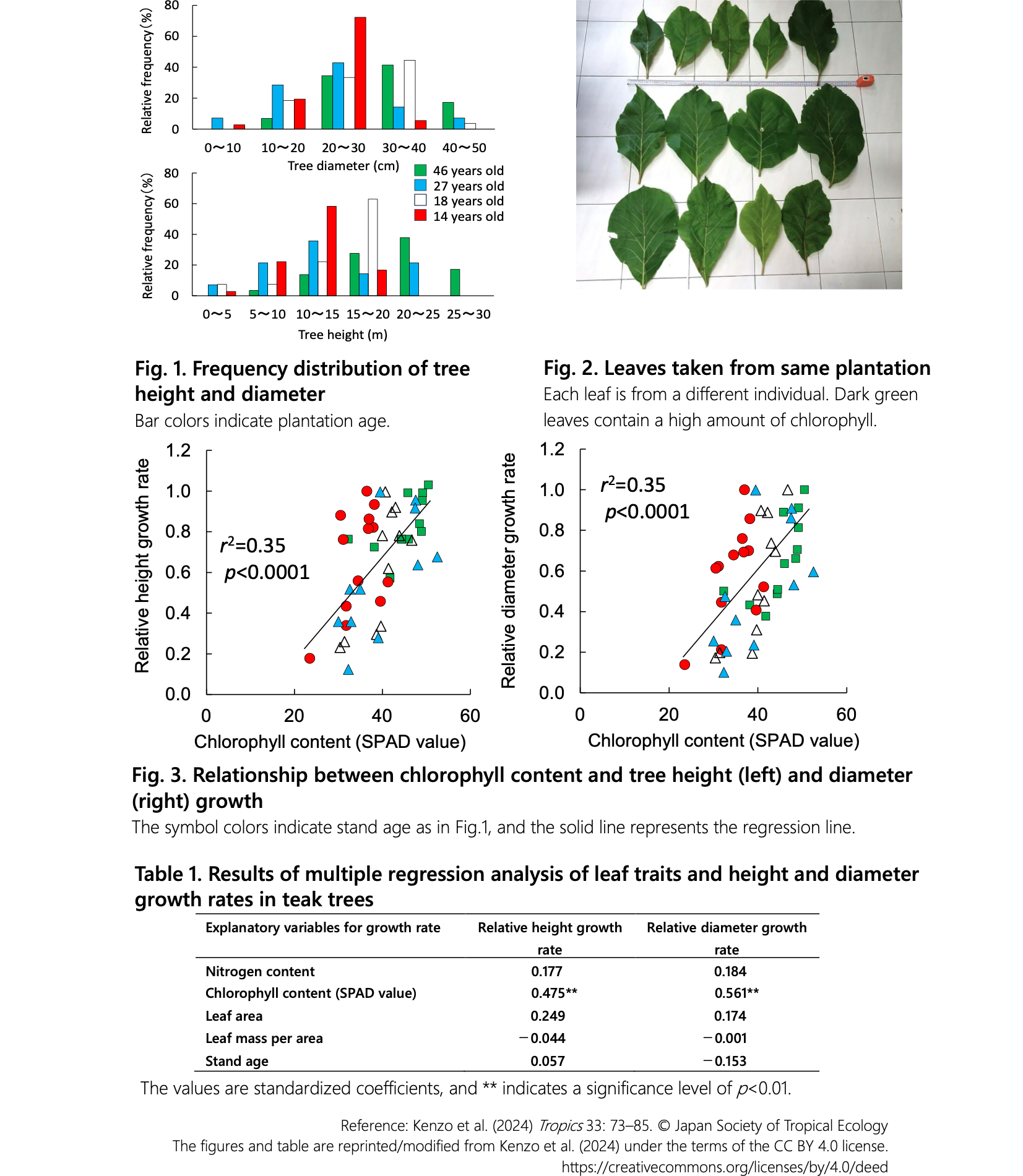Leaf chlorophyll content is an indicator of growth rate of tropical teak tree
Description
Teak (Tectona grandis) is an important timber resource in tropical forests and has a high market value, so a stable supply is required. However, there are large differences in growth rates between individual trees even within the same teak plantation. This difference limits accurate prediction of future timber yields. Various leaf traits such as leaf size, nutrient, and pigment contents affect photosynthesis; thus, they are likely to be related to the tree growth rate. For example, chlorophyll is a pigment that absorbs the energy of sunlight for photosynthesis, and if it is lacking, the photosynthetic rate decreases and growth becomes restricted. If the difference in growth rates between individuals can be easily estimated from leaf traits, it will lead to improved accuracy in predicting yields and rapid identification of areas of poor growth. This study examines the relationship between growth rate and leaf traits related to photosynthesis in teak trees.
We measured the height and diameter of teak trees in four plantation forests aged 14 to 46 years old in Malaysia and found a large variation in diameter and height within plantations (Fig. 1). Canopy leaves were collected and compared for leaf area, chlorophyll content indexed by SPAD value (hereafter referred to as chlorophyll content), nitrogen content, and leaf mass per area. Leaf traits vary greatly among individuals even within the same plantation, and they also differ in appearance (Fig. 2). Leaf chlorophyll content positively correlates with diameter and height growth rates, suggesting that individuals with high chlorophyll content also have high growth rates (Fig. 3). In contrast, there is no correlation between other leaf traits and tree growth (Table 1).
Using leaf chlorophyll content as an indicator of growth, this approach can be used to improve the accuracy of timber production across large plantation areas using remote sensing technology such as drones and satellites, and also contribute to identifying areas of poor growth in the plantation. Although these results were obtained from teak plantations in Malaysia, confirming whether similar results can be obtained from teak plantations in other regions with significantly different climates and soil traits, as well as to teak varieties that differ genetically, could make these findings useful for forest tree breeding.
Figure, table
- Research project
- Program name
- KAKEN
- Term of research
-
FY2021-2024
- Responsible researcher
-
Tanaka Kenzo ( Forestry Division )
ORCID ID0000-0002-4856-7204KAKEN Researcher No.: 30414486Yoneda Reiji ( Forestry and Forest Products Research Institute, Forest Research and Management Organization )
KAKEN Researcher No.: 00435588Azani Mohamad Alias ( Universiti Putra Malaysia )
- ほか
- Publication, etc.
-
Kenzo et al. (2024) Tropics. 33: 73-85.https://doi.org/10.3759/tropics.MS23-06
- Japanese PDF
-
2024_A06_ja.pdf971.82 KB
- English PDF
-
2024_A06_en.pdf794.19 KB
* Affiliation at the time of implementation of the study.

